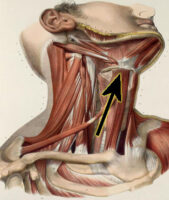Around 700,000 years ago, the development of a human-like hyoid bone suggests early hominins may have begun transitioning from simple vocalizations to more structured speech.

This period marks a critical evolutionary point for Homo heidelbergensis, whose anatomical adaptations for speech, coupled with advanced tool use and complex social structures, indicate possible use of rudimentary language. Earlier hominins like Homo erectus also showed signs of vocal communication, but whether this included structured language remains uncertain. This era highlights the beginnings of speech, setting the stage for the sophisticated linguistic capabilities of later hominins.











